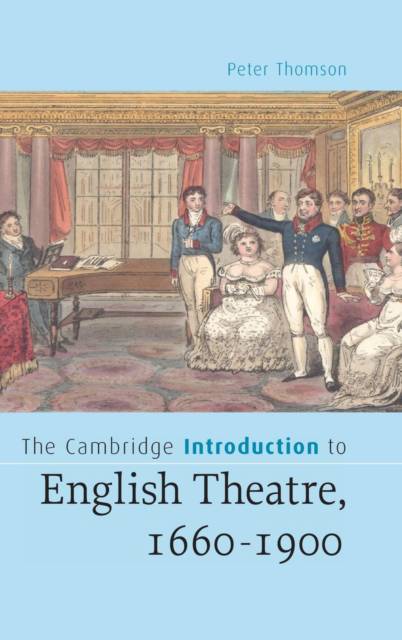
Door een staking bij bpost kan je online bestelling op dit moment iets langer onderweg zijn dan voorzien. Dringend iets nodig? Onze winkels ontvangen jou met open armen!
- Afhalen na 1 uur in een winkel met voorraad
- Gratis thuislevering in België vanaf € 30
- Ruim aanbod met 7 miljoen producten
Door een staking bij bpost kan je online bestelling op dit moment iets langer onderweg zijn dan voorzien. Dringend iets nodig? Onze winkels ontvangen jou met open armen!
- Afhalen na 1 uur in een winkel met voorraad
- Gratis thuislevering in België vanaf € 30
- Ruim aanbod met 7 miljoen producten
Zoeken
The Cambridge Introduction to English Theatre, 1660-1900
Peter Thomson
€ 82,45
+ 164 punten
Uitvoering
Omschrijving
This 2006 introduction aims to share with readers the author's enjoyment of the turbulent 240-year history of a theatre that tried, often against the odds, to be 'modern'. In each of its five parts, it deals successively with history and cultural context, with the plays and the actors who caught the imagination of their era. Peter Thomson's text, always approachable, is enriched by quotations and carefully selected illustrations that capture 'the spirit of the age' under consideration. Beginning with the reopening of the playhouses under licence from Charles II, Thomson introduces the modern English theatre by breaking off at key dates - 1700, 1737, 1789 and 1843 - in order to explore both continuity and innovation. Familiar names and well-known plays feature alongside the forgotten and neglected. This is a reading of dramatic history that keeps constantly in mind the material circumstances that produced, and sometimes oppressed, a supremely popular theatre.
Specificaties
Betrokkenen
- Auteur(s):
- Uitgeverij:
Inhoud
- Aantal bladzijden:
- 326
- Taal:
- Engels
- Reeks:
Eigenschappen
- Productcode (EAN):
- 9780521839259
- Verschijningsdatum:
- 28/09/2006
- Uitvoering:
- Hardcover
- Formaat:
- Genaaid
- Afmetingen:
- 158 mm x 232 mm
- Gewicht:
- 644 g

Alleen bij Standaard Boekhandel
+ 164 punten op je klantenkaart van Standaard Boekhandel
Beoordelingen
We publiceren alleen reviews die voldoen aan de voorwaarden voor reviews. Bekijk onze voorwaarden voor reviews.











